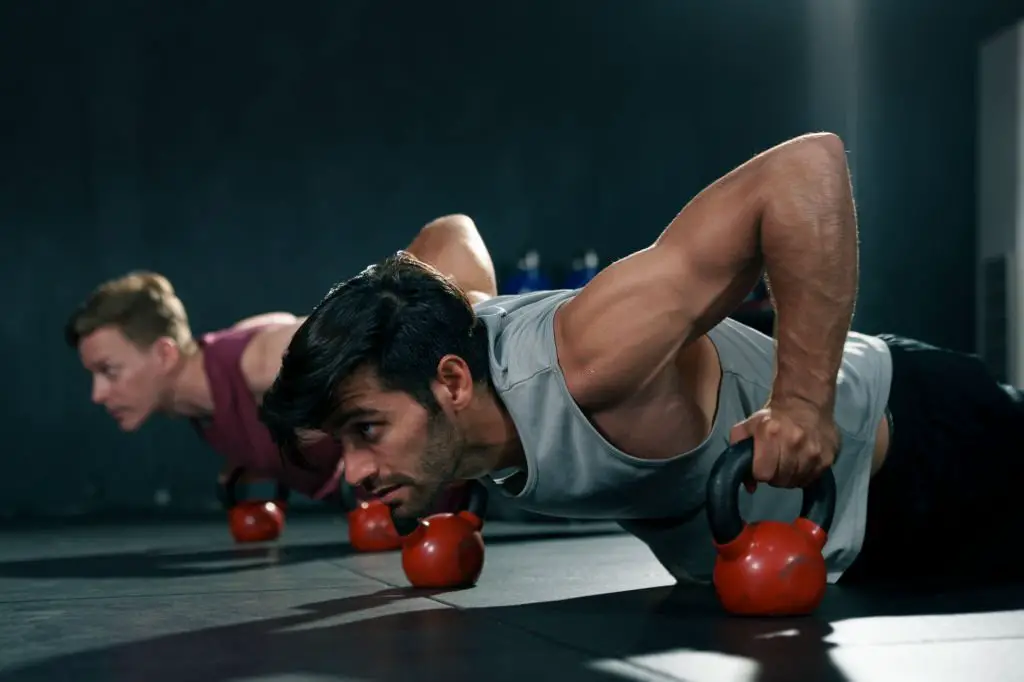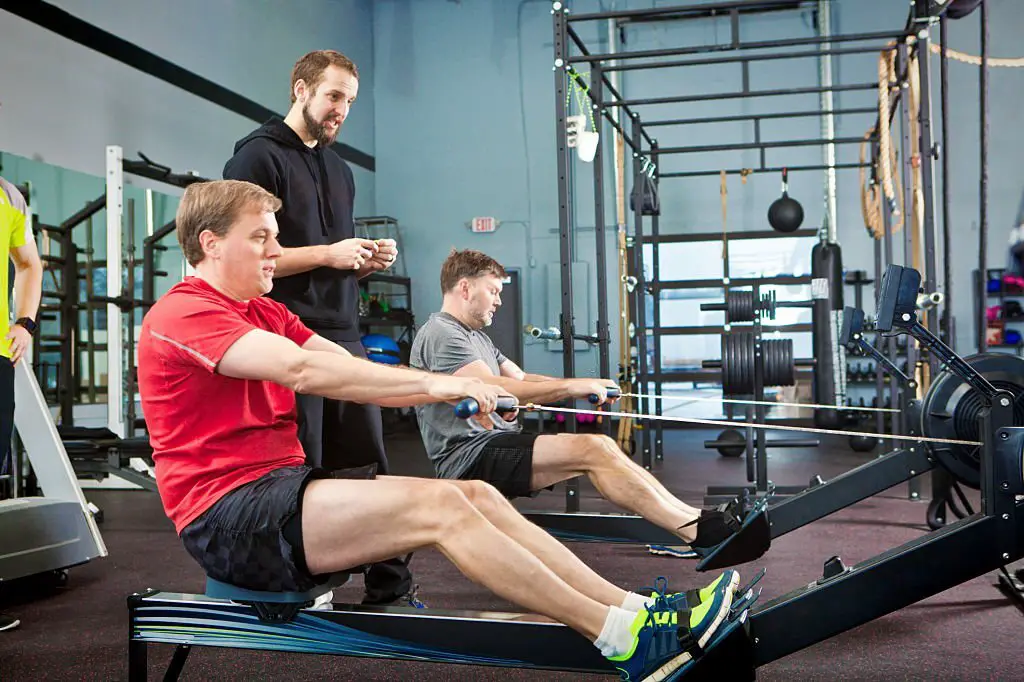If you’re a male who is looking to achieve your ideal 2000m row time, there are a variety of different training programs that can help you get there. From high-intensity interval training (HIIT) to aerobic endurance workouts and weightlifting, the right combination of exercises will increase your speed and performance on the machine. With an effective program tailored specifically for your body type, age, and goals, you’ll be able to reach new heights in no time. So if you’re ready to take your fitness journey up a notch, read on for tips on exploring different training programs that can help propel you toward achieving your ideal 2000m row time!
Table of Contents
Utilizing Cross-Training Exercises to Enhance Performance

Lastly, proper nutrition plays an integral role in any successful sport-specific training program designed with improved performance outcomes as its goal. Eating healthy meals full of complex carbohydrates before workouts along with adequate hydration throughout the duration of each session will ensure that your body has enough fuel and electrolytes needed during strenuous activities associated with striving towards peak physical condition such as high-intensity intervals or heavy-weight lifting sets respectively
Understanding Your Current 2000m Row Time
As male and female rowers, we all have our own goals when it comes to 2000m rowing times. Whether you are a competitive athlete or an amateur enthusiast, training for improved performance is essential. Finding the right training program can be overwhelming due to the sheer amount of information available online. In order to narrow down your search, it is important to consider some key factors such as your current level of fitness and experience with rowing, as well as any time-commitment limitations.
One popular method of improving performance in short distances like 2000m is interval training, which involves alternating between high-intensity bursts and low-intensity recovery phases throughout a workout session. Other methods include aerobic endurance exercises such as long-distance runs or cycles that focus on maintaining steady levels of effort over extended periods of time; this type of exercise helps increase overall cardiovascular endurance which is beneficial for racing events like 2000m rowing competitions. Strength training sessions should also be incorporated into the routine; they help build the muscular strength needed for explosive movements during races and prevent injury by strengthening tendons and ligaments around joints used in repetitive motions while rowing.
Additionally, there are specialized programs designed specifically for male or female athletes looking to improve their 2000m race times; these programs often involve detailed plans outlining how many meters need to be covered each week along with specific drills meant to target weaknesses identified through testing prior to starting the program. It is important however that one consults an experienced coach before beginning any kind of specialized program since safety should always come first when engaging in intensive physical activities like rowing.
In conclusion, exploring different types of training programs tailored towards improving 2000m race times can offer great benefits both physically and mentally by helping individuals reach their desired results in a safe manner while having fun at the same time!
Increasing Power Output with Interval Training
As a male athlete, achieving your ideal 2000m row time is an attainable goal with the help of effective training programs. To start off, it’s important to understand the fundamentals of rowing and how they directly apply to your performance. First off, good technique is essential for efficiency in any form of exercise- this includes proper posture and body alignment during each stroke as well as understanding how to effectively use both arms and legs while rowing. Additionally, developing strength in key muscles such as the lats, quads, and core will provide an extra edge when striving towards a personal best. Next up are interval or high-intensity workouts which can be used to increase cardiovascular capacity and power output over short periods of time; these have been known to be incredibly beneficial when trying to hit specific times on longer distance pieces such as 2000m rows. Finally, there are also more traditional forms of cardio such as steady-state endurance sessions which should not be overlooked- these can build overall aerobic fitness which is vital for success in most sports including rowing. All these training methods can be tailored together into a comprehensive program that takes into account individual strengths and weaknesses so you can achieve your desired results quickly and efficiently without sacrificing the quality of work or putting yourself at risk for injury due to improper execution or overtraining.
Identifying the Right Training Program for You
As a male, exploring different training programs to help you achieve your ideal 2000m row time can be both daunting and intimidating. With so many options out there, it may be difficult to decide which program is best for you. However, there are some key components to consider when selecting the right training program for your goals.
Firstly, it is important to understand what type of workouts will benefit you most in achieving your desired 2000m row time. Generally speaking, high-intensity interval training (HIIT) should form the foundation of any rowing workout routine as this type of exercise has been proven effective in increasing aerobic capacity and improving physical endurance levels. Additionally, weightlifting exercises such as squats and deadlifts should also be incorporated into the plan as these will help build the strength and power needed for long-distance rowing sessions.
Once you’ve established an appropriate workout plan that fits within your lifestyle constraints – such as availability of equipment or gym access – it is essential to track progress regularly by measuring various metrics like stroke rate or split times during each session. This allows athletes to monitor their development over a period of time instead of relying solely on anecdotal evidence about how they feel during their workouts or after completing rows/races.
Finally, incorporating recovery days into one’s weekly routine is critical not only for performance but also for injury prevention purposes; stretching before and after workouts can do wonders in terms of reducing fatigue in muscles while maintaining efficiency throughout multiple reps on the ergometer machine or water-based boat races alike. Furthermore taking regular rest days helps facilitate muscle growth needed for optimal performance leading up to race day: allowing athletes ample opportunity to recover between hard efforts gives them enough time off from strenuous activities so that they can come back even stronger than before!
Optimizing Nutrition for Optimal Performance Results
As a male athlete, it can be difficult to know what training program is best for you in order to achieve your ideal 2000m row time. There are many options out there that may work well depending on the individual and their goals. For example, some athletes may benefit from a high-intensity interval training (HIIT) program which focuses on short bursts of intense exercise with rest periods between sets. This type of program can help build muscular endurance as well as strength, making it an effective way to improve overall performance. Other athletes may prefer something more steady like a moderate aerobic routine that involves longer-duration activities at lower intensity levels. These activities will help promote cardiovascular health and stamina while also helping to burn calories and fat over time. Additionally, there are specific rowing programs available that focus solely on improving technique for better results when racing or competing in any sport involving rowing such as CrossFit competitions or dragon boat races.
Overall, no matter what type of program you choose, the most important thing is consistency – make sure to stick with whatever plan you decide works best for your body so you can continue progressing toward your goal! It’s also important to take regular breaks throughout the process — both physical and mental — so that you don’t become burned out or discouraged if progress isn’t immediate or consistent enough. Finally, make sure to talk with professionals such as coaches or personal trainers who specialize in this field before beginning any new regimen so they can offer guidance tailored specifically to your needs and objectives!
Improving Your Technique to Maximize Efficiency
As a male athlete, achieving your ideal 2000m row time can be a challenging and daunting goal. Physical training is essential to meeting this goal; however, mental preparation and focus are also important components of the process. Therefore, in order to achieve your desired result it is critical to explore different training programs that will help you reach your goals.
The most common type of program for achieving optimal performance on the rowing machine is an interval-based program. This involves short bursts of high-intensity efforts followed by periods of low-intensity recovery in between intervals. These types of workouts have been proven to improve overall endurance and speed over long distances such as the 2000m row time. Additionally, they provide an ideal environment for athletes looking to push their physical limits while still maintaining control over form and technique throughout each session.
For those who prefer a more holistic approach to fitness, there are also alternative methods available such as strength/endurance circuits which combine elements from both aerobic exercises (e.g., running) with anaerobic exercises (e.g., weight lifting). These types of circuits offer athletes an opportunity to build muscular strength as well as work their cardiovascular system simultaneously – all within one workout session! Lastly, incorporating specific mobility drills into any training routine can help decrease the risk of injury while improving the overall range of motion during activity – making these vital tools when striving towards peak performance levels on the rowing machine or any other sport-related activities!
Finding the right combination of training protocols tailored specifically towards individual needs can often be difficult but it doesn’t have to be impossible if you take advantage of all available resources. By researching different possibilities and having open discussions with knowledgeable coaches or trainers about what works best for you personally, success can easily become achievable!
Monitoring Progress and Adjusting Goals Accordingly
As a male wanting to improve his 2000m row time, there are various training programs you can explore. For starters, interval training is one of the best ways to increase your speed and endurance while rowing. Interval training involves alternating between short bursts of intense exercise with low-intensity recovery periods during which you rest and recover. This type of program helps build up strength and power so that when it’s time for race day, you can push through longer distances without tiring out. Another type of workout that could help reach your goal is interval circuit training. Circuit workouts involve performing several exercises back-to-back in quick succession with minimal rest in between sets; this helps develop muscular endurance as well as aerobic fitness at the same time and keeps things interesting too! Additionally, if you want to focus on building up specific muscle groups relevant to rowing such as biceps or lats, then adding weightlifting into your routine might be beneficial for maximum results. Lastly, don’t forget about proper nutrition! Eating a balanced diet high in protein and complex carbohydrates is essential for optimal performance; aim for meals like lean meats combined with whole grain pasta or quinoa along with nutrient-dense vegetables. All these small changes will add up over time and help us get closer to achieving those PB goals!
Developing an Effective Strength and Conditioning Plan
As a male, reaching your ideal 2000m row time can seem like a daunting task. It is important to remember, however, that with the right training program and dedication, this goal can be achieved. The first step in creating an effective plan is to understand which type of training will work best for you. Interval training, steady-state rowing, and specific technique drills are all excellent ways to become better at rowing and reach your ultimate goal.
Interval Training involves alternating between periods of high-intensity exercise followed by lower-intensity or active rest periods. This type of workout allows you to push yourself harder than normal while still taking short breaks throughout the session in order to reduce fatigue and injury risk. Intervals also help with measuring progress as they allow you to track how quickly you’re completing each set compared to previous times.
Steady-State Rowing on the other hand focuses on maintaining a consistent pace over longer distances for extended periods of time – typically 20 minutes or more – allowing for greater stamina development when compared with interval sessions alone. Steady-state workouts can also offer an opportunity for mental endurance building which may prove beneficial when attempting longer distance events such as 2000m rows as well as helping improve overall technique during longer stints on the ergometer machine (also known as ‘the ergo’).
Finally, Specific Technique Drills should not be overlooked either; these focus solely on improving stroke rate/power output efficiency so that speed gains from each individual pull are maximized rather than relying solely upon strength or aerobic capacity alone – both key elements in achieving success across any rowing discipline! Examples include ‘Power 10s’ where 10 strokes are completed at maximum power followed by 30 seconds rest before repeating until complete; ‘10 minute pieces’ where attempts are made at increasing 500m split times over multiple intervals without sacrificing form; or even simple exercises such as single leg rowing drills which strengthen glutes/hamstrings while simultaneously teaching control & balance throughout each stroke cycle too!
Overall then there exists plenty of choices when it comes down to selecting the optimal approach towards achieving one’s desired 2k row time as a male athlete regardless of experience level…so why not give them all a try today?!
For male athletes looking to improve their 2000m row time, there are a variety of training programs available. From interval-based workouts and strength training to focusing on technique, each program can be tailored to individual needs. These various methods will help build the endurance and power needed for the event as well as increase an athlete’s ability to stay focused throughout the race. With dedication and hard work, any athlete can achieve their ideal 2000m row time by exploring different training programs that best suit them.
Exploring different training programs is essential for any male athlete wanting to reach their peak performance in rowing events like the 2000m race. Whether it’s through interval workouts, strength exercises, or improved technique, every program should be personalized for optimal gains in speed and stamina during competition. With the proper application of these strategies, male athletes can make great strides toward achieving their desired results while staying motivated along the way. Dedication is key when striving toward success in this sport – it’s up to each

